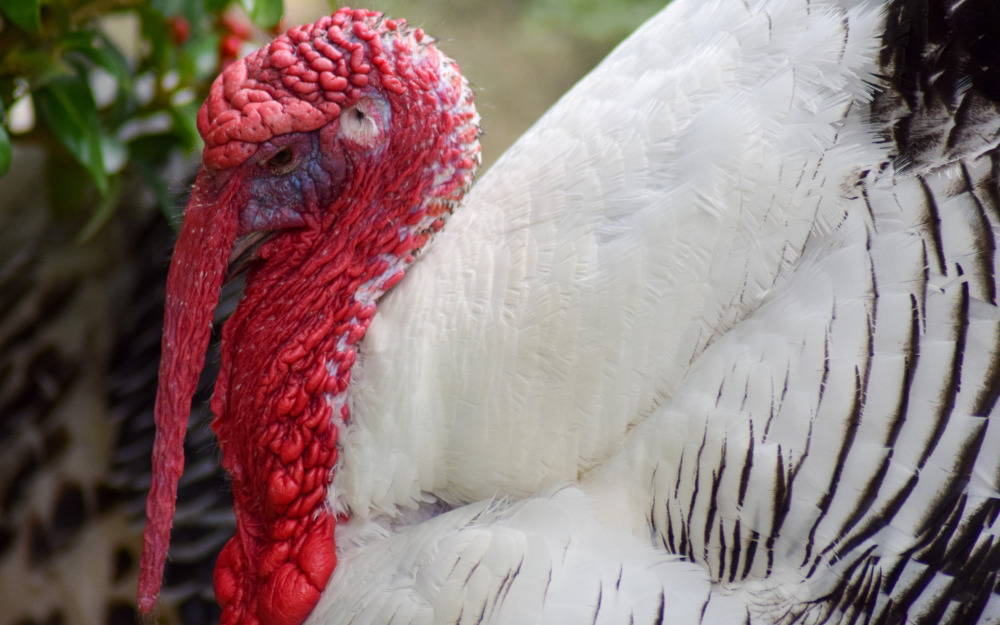Turkey keeping terminology and interesting facts.

Tom: Adult male turkey
Hen: Adult female turkey
Poult: Young of turkey, sometimes mistakenly called turkey chicks.
Snood or Dew bill: The fleshy protuberance near the base of the beck
Caruncles: The fleshy protuberance on the head and neck usually pink or red in color which appear from about 5th week of age
Dewlap: A large flap skin seen immediately below the chin
Bread: A tuft of hair attached to the skin of the upper chest region
Strut: Mating behaviour of male turkey
Craw: The turkeys crop is also called the craw.
Debeaking: Poults can be debeaked to control feather picking and cannibalism. Debeaking can be done at day old or 3-5 weeks of age and consists of removing one third of the beak.
Desnooding: Removal of the snood or dewbill is to prevent the head injuries from picking and fighting. At the day old the snood can be removed by shumbnail or finger pressure. At 3 weeks of age it can be cut off close to the head with sharp scissors.
Detoeing or toe clipping: Clipping is done at day old by removing the tip of the toe just to the inside of the outer most toe pad including the entire toenail.
Interesting facts about turkeys:
- A wild turkey is much faster than the domestic turkey. The fastest wild turkey can run up to 35 mph, while a full grown domestic turkeys pace is a slow walk (females are a little faster because they weigh less than the male).
- Wild Turkeys have better eyesight and hearing than domestic turkeys.
- Only male turkeys gobble, female turkeys make a clucking sound but cannot gobble.
- Only the male turkey can fan his tail feathers, females cannot.
The turkeys crop is also called the craw.